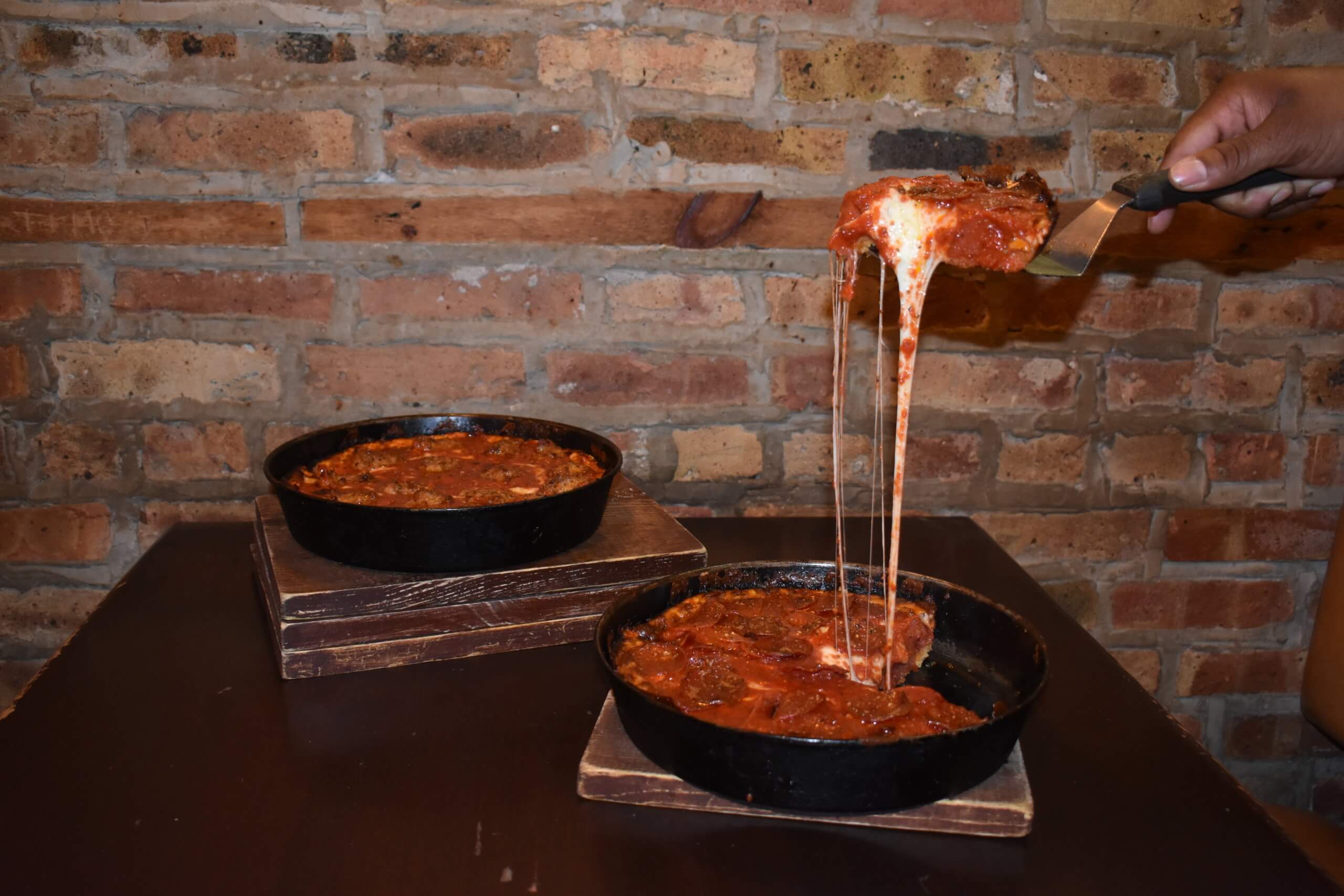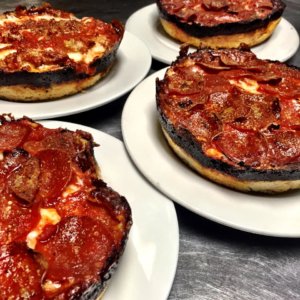
Take a bite out of your favorite pizza and you’re instantly met with an assortment of flavors. Melted cheese comes together with classic sauce, crisp crust greets your taste buds, and anything from meat to vegetables or even sweet pineapple takes the experience to the next level.
When you think about pizza, it’s nearly impossible to imagine it without heaps of cheese and tasty tomato sauce, not to mention sausage, pepperoni, or plenty of other delicious toppings. But the first pizzas were actually quite different — and you might be surprised to learn where pizza was first invented.
Where Did Pizza Originate?
If you offered a guess that pizza got its start in Italy, you’d be right — well, kind of. Though what we think of today when we think of pizza did come from Italy, that warm, savory, delicious pie actually boasts a long and storied history that dates back much further than the first modern Italian pizzas in the late 18th century.
Break pizza down to its simplest components. Essentially, you have yeasted flatbread with some ingredients baked onto it. Italy can’t claim credit for that. You have the ancient Greeks and Romans to thank for coming up with that tasty treat! Baked flatbread topped with oil and spices came out of those ancient civilizations. (Sound familiar? You might also love flatbread with oil and herbs, but you’d likely call it focaccia bread.)
If you break down pizza even more and consider it a flatbread made in an oven, you can date its origin back even further. Ancient Babylonians, Egyptians, and Israelites all ate some form of flatbread baked in mud ovens.
So, depending on how you define “pizza,” you might credit a few different ancient places as our favorite dish’s birthplace. But what about pizza as we know it today?
The Origins of Modern Pizza
Oh, delicious modern pizza. You know: piping hot, beckoning you in with scrumptious crust, plenty of tomato sauce and cheese, and maybe some vegetables or pepperoni. The kind of pizza you want to order right now. That idea did get its start in Italy.
Though bread baked with oil and spices existed in ancient Greece and Rome, cheese and tomatoes weren’t added until later on in history. If you visited the port city of Naples in the late 18th century, you might find something similar to modern pizza while strolling around the city’s streets. In fact, pizza was considered street food back then.
As legend has it, after Italy unified toward the end of the 18th century, Italy’s King and Queen paid a visit to Naples, sampling pizzas while they were there. The Queen had a favorite type — one with green basil, red tomatoes, and soft, white cheese. Fun fact: The Queen’s name was Margherita, and pizza with cheese, basil, and tomatoes is still known as Margherita pizza today.
How America Changed Pizza
Although pizza was popular in Italy for some time, it wasn’t well known in other places. That started to change in the late 19th century and early 20th century, when Italians started immigrating to America. They brought their culinary culture along for the journey, including their penchant for pizza. New York boasted one of the first pizzerias on record, dating back to 1905.
Pizza then transformed into something more uniquely American. Pizza chains, pizza delivery, and all those unusual toppings (think: pineapple) all came from American interpretations of the ancient dish.
Not only is today’s pizza very different from its Greek or Roman flatbread predecessors, it’s also different from modern pizza in Italy. In Italy, you’re more likely to find pizza with a very thin crust and minimal toppings.
So What About Deep-Dish Pizza?
Chicago-style pizza started from the same tradition. Immigrants from Naples came to the United States throughout the later 1800s and into the early 1900s. Chicago was soon home to a community of first- and second-generation descendants of those Neapolitan immigrants. Many sought out thin pizzas that reflected their families’ culinary culture.

In 1943, two entrepreneurs decided to create an Italian-American twist on that classic pizza. Ric Riccardo and Ike Sewell opened Pizzeria Uno in Chicago, where they served pizza, but in a completely new style. This pizza had a crunchy crust and inverted layers in a deep dish.
From top to bottom, Chicago-style pizza typically boasts layers of vegetables and meat, a thin layer of tomato sauce, a dense pile of mozzarella cheese, and then that crunchy crust. It’s created by coating a deep, cake-like pan in olive oil before pressing a white semolina flour dough against the round bottom and edges. That allows the olive oil to fry the dough just a bit as it bakes, creating that signature golden crust we all know and love from deep-dish pizza.
Before any given deep-dish pizza goes to the oven, it gets a layer of mozzarella cheese. Then, veggies and meats (usually Italian sausage) cover the mozzarella. The finishing touch comes from a layer of sweet, crushed tomatoes on the top. Because the layers are inverted from regular pizza, the cheese doesn’t burn.
All that to say, Riccardo and Sewell achieved their goal of making a pizza unlike any other pizza before it. Deep-dish pizza became a Chicago icon. You can still sense the history that culminated in this amazing invention in every oh-so-delicious bite.
From the first flatbread baked with oil to the crispy, cheesy pizzas of today, pizza has long served as a culinary favorite. If you’re dreaming of pizza after reading up on its history, Pequod’s Pizza has you covered. You’ll find both thin crust and pan pizza on our extensive menu. Whether you dine in or have your pizza delivered, we make it easy to have your favorite dish whenever and wherever the craving hits. We even ship our pizzas to wherever you are — nationwide! Choose your crust, add all your favorite toppings, and dive in. You’ll be building on a great historical tradition when you do.